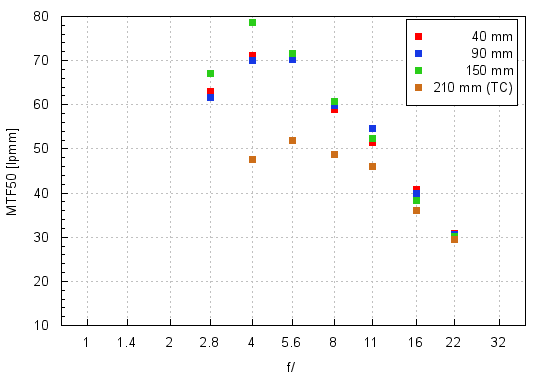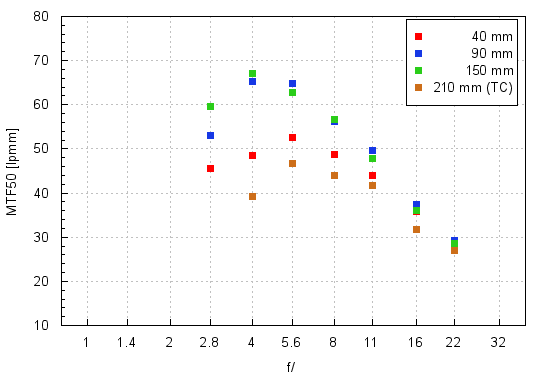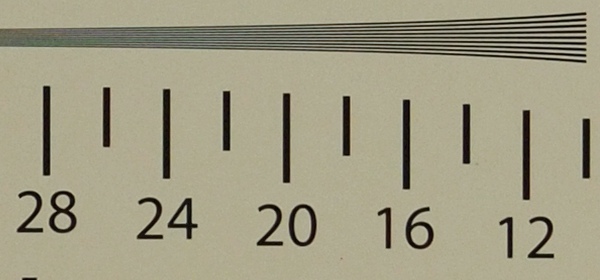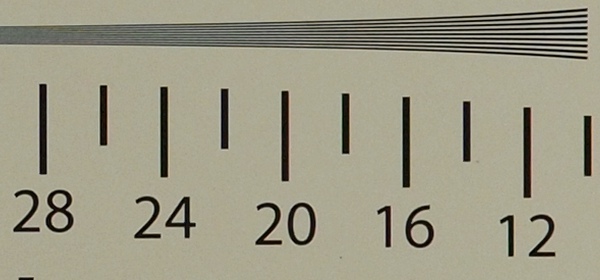Olympus M.Zuiko Digital 40-150 mm f/2.8 ED PRO
4. Image resolution
Let’s glance at the graph below and compare the results of the Olympus in the frame centre and on the edge of the frame to those values. It’s worth mentioning that we are also presenting results at the 210 mm focal length reached with the help of the system 1.4x teleconverter.

Please Support UsIf you enjoy our reviews and articles, and you want us to continue our work please, support our website by donating through PayPal. The funds are going to be used for paying our editorial team, renting servers, and equipping our testing studio; only that way we will be able to continue providing you interesting content for free. |
- - - - - - - - - - - - - - - - - - - - - - - - - - - - - - - - - - - - - - - - - - - - - - - -
The focal range of 40-90 mm shows results at least very good and practically the same within the margin of error. Already at the maximum relative aperture the image is of good quality, with MTFs reaching over 60 lpmm. On stopping down the aperture to f/4.0 and f/5.6 they increase to a very high level, a tad above 70 lpmm.
It is clear the performance of the lens was optimized with the maximum focal length in view – the results you get there aren’t worse than those reached by very good system primes. The maximum values near the f/4.0 aperture amount to almost 80 lpmm and it would be hard not to call such a level ‘sensational’ at least.
After attaching the teleconverter the situation worsens significantly but still the quality of images is hardly weak. Already at the maximum relative aperture the photos are decently good and on stopping down they improve even further; still don’t count on any exceptional sharpness.
Now let’s check the edge of the frame with the help of a graph below.

Once again the performance of the set including the teleconverter is the weakest – a decent quality of images you get only near f/5.6. Fortunately that situation changes when you detach the focus-increasing system. When the worst comes to the worst, so at 40 mm , the image is perfectly acceptable already from the maximum relative aperture. The situation improves further after you pass to longer focal lengths ranging from 90 to 150 mm – then the images are simply beyond reproach.
To sum up the lens itself has no weak points, offering you excellent image quality in the frame centre and a very good or at least decent quality of images on the edge. The cooperation with the converter is not impressive on the very edge of the frame but in the centre the set performs very well and it is true for practically all useful apertures.
Traditionally we end this chapter by presenting crops taken from photos of our resolution testing scene in the frame centre. It’s worth reminding that these are JPEG files straight from the camera which were saved along RAW files, described above.
| E-PL1, JPEG, 90 mm, f/2.8 |
 |
| E-PL1, JPEG, 150 mm, f/4.0 |
 |






